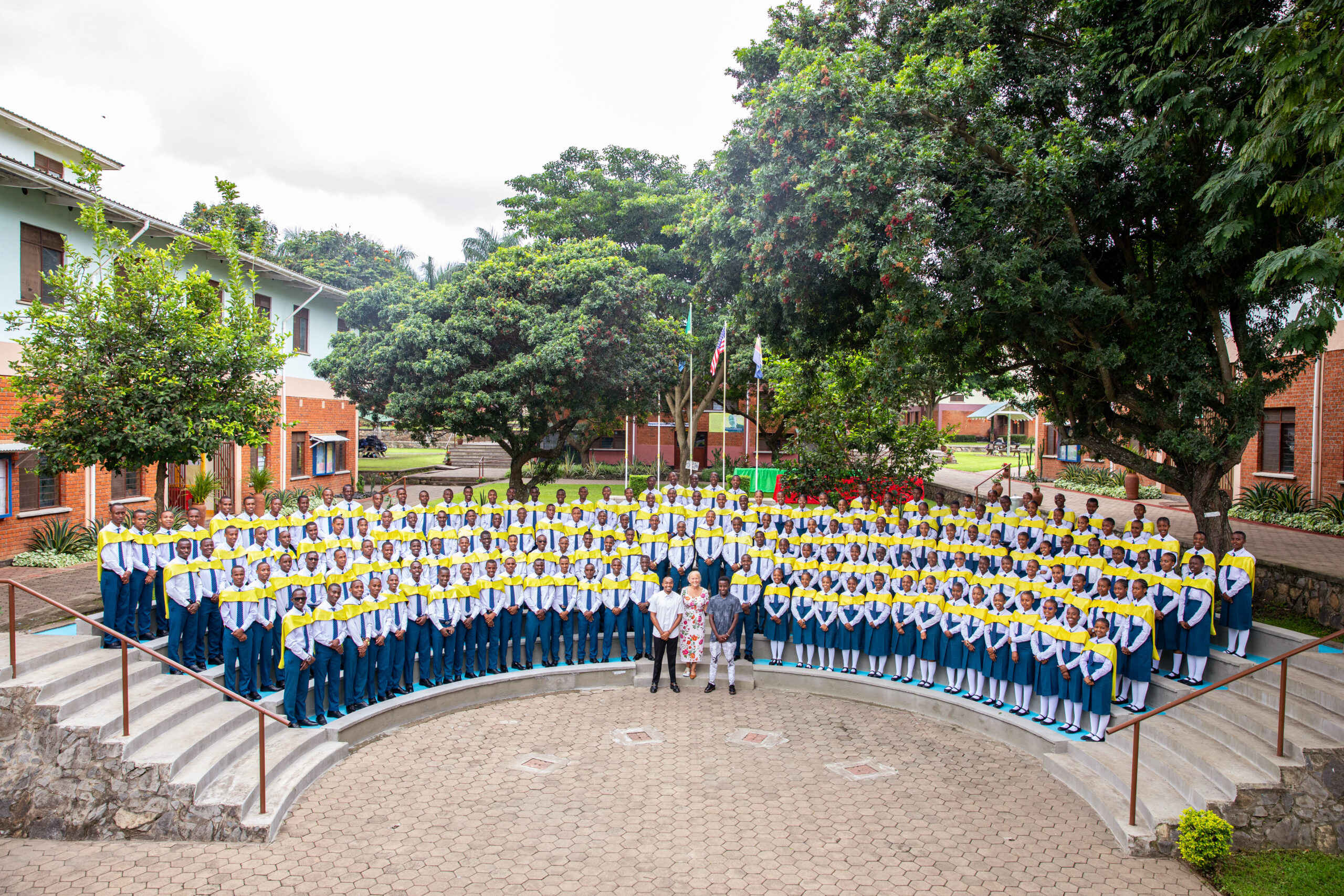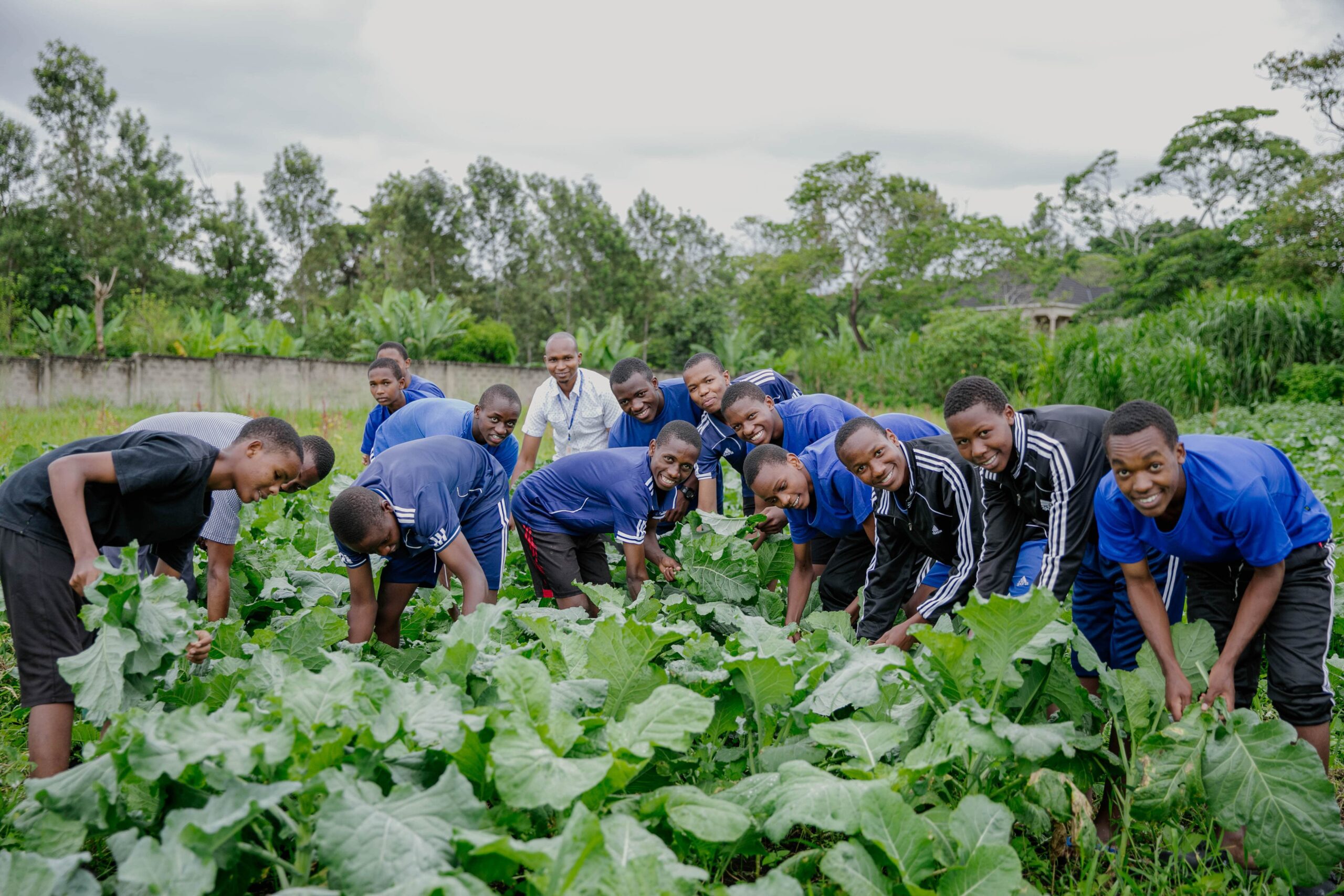Gemma Sisia’s parents, Sue and Basil, fervently believed in the power of education to change the future.
The couple, who raised eight children on a sheep wool farm in New South Wales, Australia, made significant sacrifices to ensure that their seven sons and one daughter had excellent educational opportunities. They also were strong believers in community service.
“They had an open-door policy at home for people wanting to come, stay, and have someone to listen to them,” she says. “My parents constantly showed me how important it is to help others.”
So, it’s not surprising that after she graduated from the Universities of Melbourne, Northern Territory and New England at 22 years of age, she took her newly minted Bachelor of Science degree and Graduate Diploma in Education to Africa. She taught math, science, and sewing at an under-resourced private girls’ school in Uganda.
She loved the work but was aware that her students’ parents were wealthy enough to afford private school for their girls. Gemma and the local art teacher who were good friends often talked about how to break the cycle of poverty that was rampant in East Africa, particularly for underprivileged girls. They concluded that without raising the standards of education across the board in the region, no amount of foreign money could alleviate the widespread poverty.
“That’s where the seed of building a school was planted,” she said.
Then came a fateful trip to Tanzania to visit one of that nation’s beautiful wildlife parks – and Gemma fell in love with her safari guide. The two married, and while Gemma was looking forward to raising her own family (the couple has four children), she knew she also wanted to pursue her dream of a school that would provide an excellent education to Tanzania’s poorest children.
She confided her dream to a close friend in Australia, who gave her 10 dollars. Gemma promptly opened up a bank account with that first donation. Her father-in-law gifted her with two acres of land in the Arusha District of Tanzania, so she’d have a site for the school. And her father, Basil, introduced her to the Rotarians.
Gemma shared her dream with local Rotary clubs in and around New South Wales. She told them the startling statistics of how poverty wrecks havoc with education in East Africa: according to UNICEF, 70 percent of children aged 14–17 years in Tanzania are not enrolled in school. Less than 4 percent make it to the final two years of secondary education.
“Without our school, these students might not attend school at all, or if they were one of the lucky few, their schooling would have been in an under-resourced government school with a handful of teachers for every 1,000 pupils,” she says. “And without a good education, they won’t be able to gain skilled employment, and their families would continue to lead lives of perpetual economic struggle.”
Gemma was persuasive. By the end of her “speaking engagement” weekend, the Rotary clubs raised $20,000 towards the school. Not only that, teams of volunteers out of the clubs came to Arusha to build the two blocks of classrooms and a playground. The Brisbane Planetarium Club built the foundations of the school library.
Gemma named the school after the patron saint of hopeless causes, saying it is a nod to her unwavering faith in a cause that thousands of people, united by a shared dream, have worked tirelessly to support.
The School of St Jude opened in 2002 with a mere three students, but it grew quickly. Now enrollment is almost 2,000 and the school’s three campuses (one primary, one secondary and one boarding) are spread over 50 acres. All the students attend on full scholarships, which not only pay for their teachers, books and supplies, but transportation, school uniforms and at least one hot meal a day. Students old enough to board (over two-thirds of the pupils attending St Jude’s) live in dorms on campus and are provided three meals a day.
The school has a competitive and highly extensive application process.
Each year, over 3,000 candidates from government schools are invited to attend the selection process (where up to 150 places are available across first-grade, seventh-grade and ninth-grade). They complete a series of tests, with the youngest needing to show an enthusiasm for learning and some proficiency in Swahili, the native language, and the older students completing tests in math, science, and English. Ultimately, the children will be taught in English, as most universities and jobs in the key professions require fluency in English.
The students who show the most promise are then assessed as to their financial and social circumstances to make sure the family falls within the income guidelines and are truly deserving of a place at St Jude’s.
Once they are accepted, they are given a free, high-quality and varied education, plus resources to help them in their post-secondary education or training. The co-educational student body reflects a wide swath of Tanzanian society, with students representing numerous religions and tribes.
Seventeen years after opening its doors, the first few cohorts have graduated from the school. Gemma says that most of these 392 graduates have undertaken a year of community service, voluntarily teaching core subjects to thousands of children in local government schools who otherwise wouldn’t have had teachers. Many have now also gone on to study at universities in much-needed fields such as medicine, engineering, law, and education.
“A number of our students have earned international recognition for science and entrepreneurship,” she adds, “and we will soon be seeing our first university graduates!”
Throughout it all, Rotarians and other Australian-based donors have been the core of The School of St Jude supporters, with a now growing donor-base in America too. Gemma returns to Australia every year for a multi-week tour to drum up support as part of the school’s annual fundraising campaign. It’s day after day of meetings, presentation, and events to secure the millions of dollars it takes to pay for a staff of about 300 local teachers and support staff as well as food, books, supplies, and campus maintenance.
“It’s always a killer itinerary, but it’s essential,” she says. “There are hundreds of local workers and thousands of students depending on it.”
Cindy May, Cindy May Marketing (read the original article here).









Replies